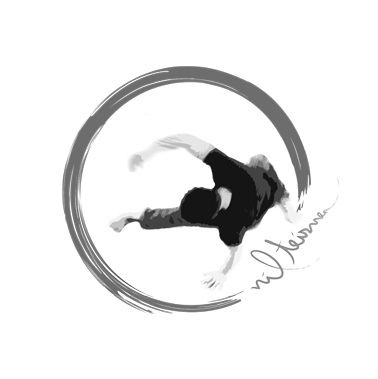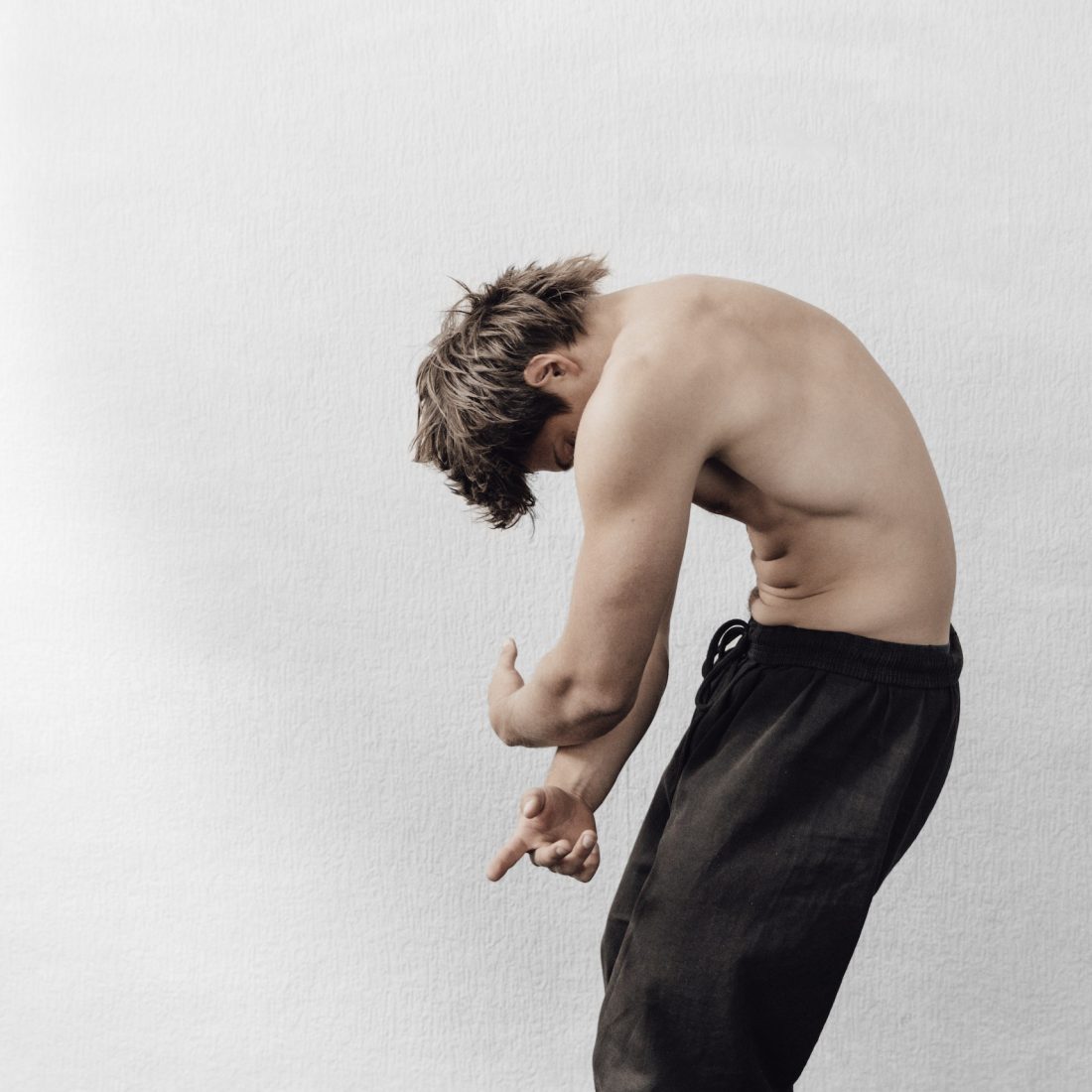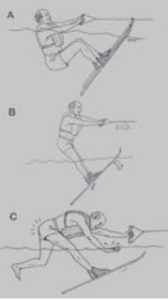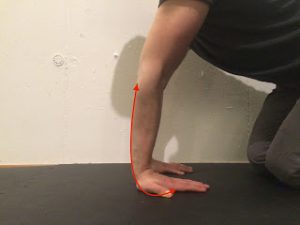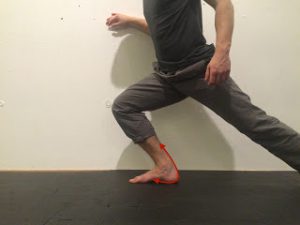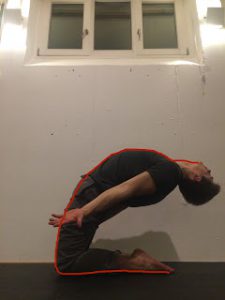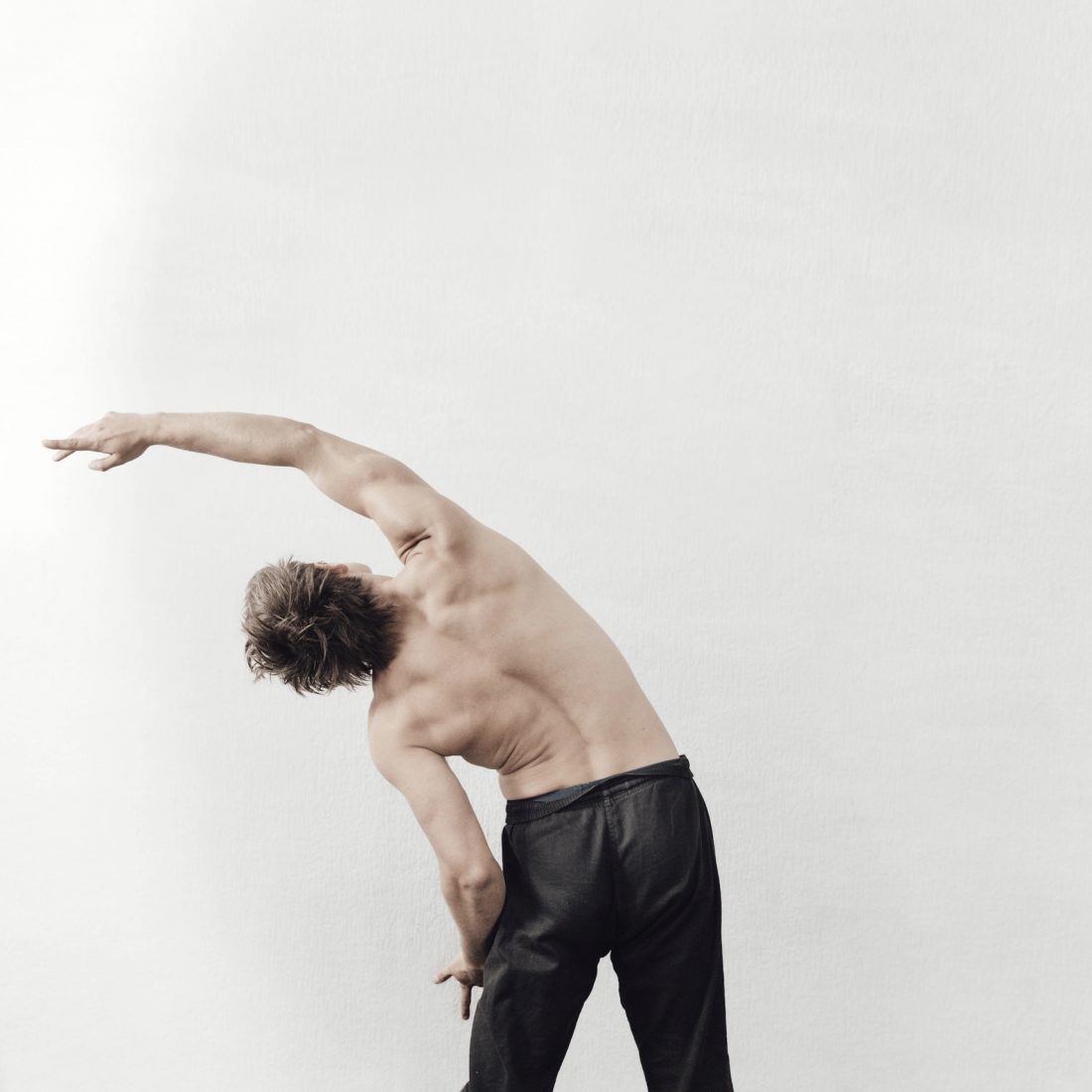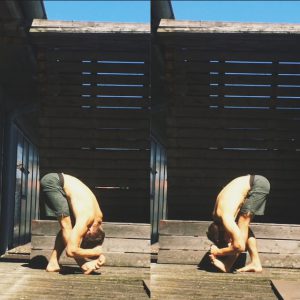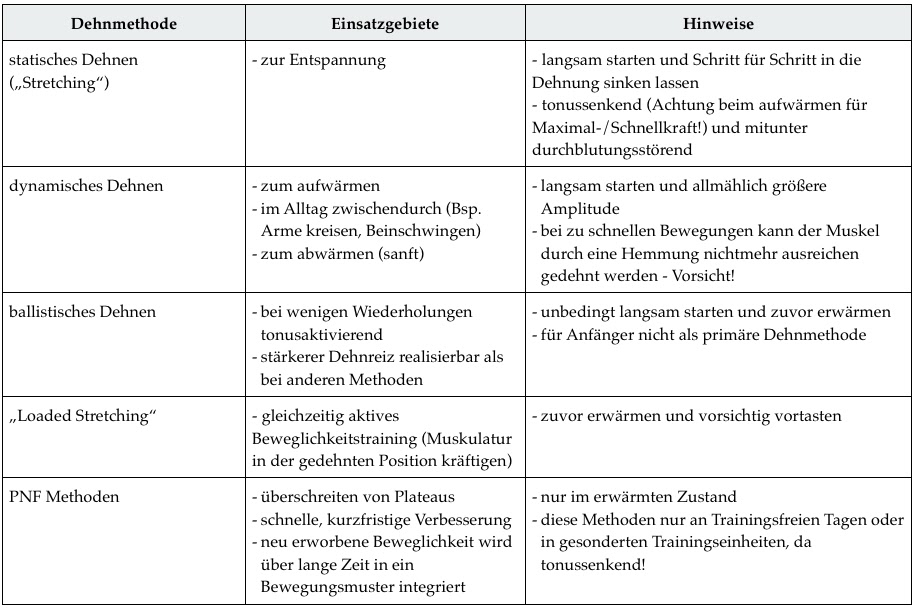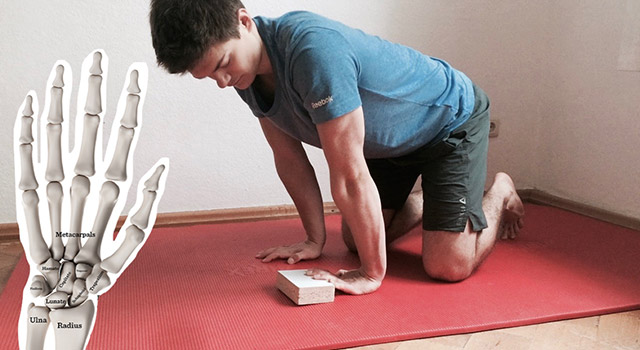Mobility: Basis for Movement Part 1
What is mobility – is mobility the same as mobility? Who should be mobile and why? And for many very important: How do I become mobile again? And why do I use the word “again”?
In the following article I would like to give an overview of this exciting topic, answer the above questions (and more) and give my opinion, based on my own experience, my work as a trainer and my studies in sports science, regarding mobility in training and everyday life.
I have tried to keep the article as simple as possible so that it can be understood by everyone, even if the subject matter is completely new. Nevertheless, one or two Latin words will appear, of course with the necessary explanation.
This is not an article based solely on practical experience, nor does it meet all scientific standards. However, it will give you a very comprehensive picture of the subject of flexibility and equip you with the necessary knowledge to help yourself to a flexible body. If in doubt, please consult a professionally trained trainer/therapist or similar.
For a better overview, I have divided the text into the following points.
1 What is mobility?
1.1 Basic concepts
1.2 Physiological mechanisms
1.3 Forms of mobility
2 Why train flexibility?
2.1 Advantages and effects of flexibility training
2.2 Factors influencing flexibility
2.3 Myths
3 How do I become mobile?
3.1 Methods
3.2 Timing of flexibility training
4. summary
1. What is Mobility?
Mobility affects us all. Mobility enables our joints to realise large movement dimensions. Many everyday and sports movements require a large range of motion. Imagine the following situation, for example: The light bulb of your ceiling lamp needs to be changed, so you take a ladder and start to unscrew the light bulb from its socket. Or: You drop something on the street, so you squat down and pick it up. Or: You get on a bus with a rather high entrance. Or, or, or. All these movements could become a problem with severely limited mobility in the associated joints. In sports situations, the role of mobility seems even more ubiquitous: a split in gymnastics, jumping over a hurdle in hurdling, or the low squat of a sumo wrestler. Flexibility accompanies us at every turn. Now look forward to the following lines that will hopefully bring some light into the darkness!
1.1 Basic Concepts
“Mobility is the ability to perform movements arbitrarily with the required amplitude” or “the ability to perform movements with the required or optimal amplitude, which is made possible by the joint systems” are only two of the many definitions around the topic of mobility. In order to understand these definitions, it is first necessary to clarify the basic terms. After all, mobility is made up of several components, including:
Articulation, as the range of oscillation of joints, influenced by bony structures,
extensibility, as the stretchability of muscles, tendons, skin and connective tissue. Mobility, another term that is very comprehensive and refers to the ability of a joint to move freely. Mobility is influenced by anatomical-structural components (for example, ossifications at joints), length and tension of the muscles surrounding the joint, quality of the tissue (e.g. connective tissue such as “fascia”) as well as the neuromuscular control of the joint (= how well the nervous system can control the joint).
Other terms such as flexibility can be seen as synonyms for mobility.
As you can see, there is a lot to explore, research and talk about around the topic of mobility!
In the next section, I will touch on the physiological mechanisms of the topic and show which components of flexibility can be trained.
1.2 Physiological Mechanisms
The basis is the anatomy of the tissue to be stretched: muscle, tendon, connective tissue, skin – although I will only touch on the subject as it would otherwise go beyond the scope of this article. Put simply, most skeletal muscles (those that can be controlled at will and are used to move the skeleton) each have a tendon at their ends. The tendon connects the muscles to a bone via a connective tissue, the periosteum, and can thus transmit forces.
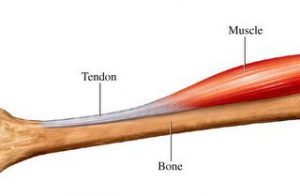
(Quelle: http://photos1.blogger.com/img/147/2431/320/tendon%20attach.jpg)
The muscle (1) itself consists of many muscle fibre bundles (2), which in turn can be broken down into individual fibres (3). The individual fibre can be broken down again into even smaller muscle fibrils (4). If we break the whole thing down one more time, we arrive at the sarcomere. This sarcomere consists of many contractile units that are ultimately responsible for performing muscle contraction/relaxation.
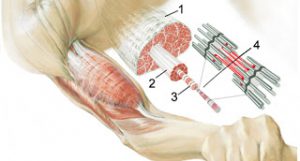
(Quelle: http://www.apotheken-umschau.de/multimedia/66/94/263/6333259793.jpg)
Schematically, this movement can be represented like a telescopic antenna: during contraction (tension) of the muscles, the filaments slide into each other – the muscle shortens and becomes thicker. During relaxation, the filaments slide apart – the muscle returns to its original length. The following video shows this quite clearly.
[youtube https://www.youtube.com/watch?v=QW3ZFtT202Y]
Science is still not 100% sure which structures of the sarcomere are ultimately involved in mobility (For further research: titin filaments, the only elastic elements within the muscle fibre). In contrast, a tendon consists mainly of collagen. This tissue has very good tensile strength, which is of course very important when you consider that enormous forces act on it, and therefore allows only very small amounts of stretching. The substance that holds all our structures in place is connective tissue. There are different types of connective tissue, which fulfil different functions in the body. Important for this topic is the fact that the connective tissue also coats the individual fibres of the muscles and can influence the state of tension (in this article I will not go into the various functions, such as plasticity of the connective tissue. This is an exciting and extensive topic for the near future). In the meantime, if you want, you can watch the following short documentary on the subject of fascia:
[youtube https://www.youtube.com/watch?v=ZY3W9FFUvAU]

(Quelle: https://image.jimcdn.com/app/cms/image/transf/none/path/sf22547969010ed89/image/ida1669d6d0b86e9e/version/1418562170/faszien.jpg)
The skin as a component mostly contributes only minimally to mobility in the conventional sense and will not be discussed further in this article.
What happens when a muscle is being stretched?
To explore this question, we look at two other structures in muscle and tendon: the muscle spindles and the Golgi tendon organs. These organs are “tension detectors” and give our brain feedback about the length of our muscles and tendons respectively. At the beginning of a stretch, the contractile units of the sarcomeres give way – the telescope moves apart. If the tension in the muscle becomes too high, the muscle spindles switch on and give our nervous system the signal: “Before the muscle tears – tense the muscle!” This protective mechanism thus serves to prevent injury and is called “self-reflex”. If the stretching in the musculature nevertheless continues to increase (for example in the case of a fall – see illustration)
the Golgi tendon organs, which are located at the transition from muscle to tendon, switch on and cause exactly the opposite: a reflex relaxation of the same muscle. This mechanism serves to provide the muscle with a certain stretch reserve and is called the “tension reflex”. We will look at these mechanisms again later in the different stretching methods.
Which components of mobility can be trained?
From a structural point of view, about 50% of the mobility of a joint is determined by the joint structure and 50% by muscles (approx. 41%), tendons and ligaments, connective tissue and skin (% values are of course only a guideline and cannot be generalised!). Articulation (remember: bony structure of a joint) is thus a major factor that can influence the mobility of a joint. However, like any other tissue in the human body, a bone has the ability to adapt. The anatomy of a bone allows it to respond to stress and gradually adapt to that stress. However, this process requires a lot of patience and, above all, time. An example of changes in bony structures are femoral head adaptations in old age (femoral neck angle).
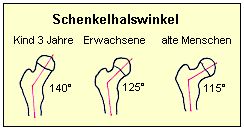
(Quelle: http://www.medizinfo.de/becken/images/ccd_winkel.jpg)
If you now blame your problems with mobility on your innate low flexibility, you are very likely on the wrong track! In most cases, very good mobility can be achieved, which is mainly due to changes in the musculature (especially muscle tension, which is built up by the nervous system). As a small child, most of us possessed optimal mobility – only very many “unlearn” this ability.
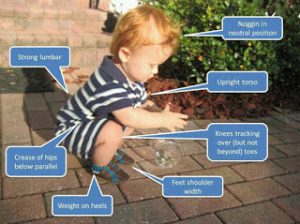
(Quelle: http://nicktumminello.com/wp-content/uploads/2012/11/baby-squat.jpg)
The basis for this is the principle “Use it, or Lose it”. As written above, every structure of our body is subject to constant adaptation. If you don’t use a structure, why try to maintain it? This is also true for flexibility: If you never bring a muscle to its final range of motion, it will adapt to the length that is actively used by you! Accordingly, flexibility training does not mean lengthening the muscle, but rather returning it (optimally) to its original state of tension. Here is an important hint: the assumption that muscles can “shorten” is not scientifically proven! To date, the structural length of a muscle cannot change (except pathologically). As we have established above, this is determined by the length and number of sarcomeres. Rather, there is a lower tolerance to stretching tension (“stretching pain”).
The only change in length in the muscle occurs during contraction and relaxation (to repeat: sliding into each other of the contractile units in the sarcomere), but it is reversible (can be reversed).
In the next section, I will discuss different forms of flexibility and show that not all flexibility is the same.
1.3 Forms of mobility
In training theory, the following forms of mobility are distinguished:
According to the muscular mode of action:
– Passive: defined as the ability to move a joint as far as possible by the action of external forces (gravity, partner, own body weight).
body weight) to assume as large a joint angle as possible.
– Active: defined as the ability to assume a stretching position through muscular tension. In
In plain language: strength training. The muscle that works here is on the opposite side of the muscle to be stretched.
opposite side of the muscle to be stretched.
[youtube https://www.youtube.com/watch?v=bOlMarPm-Uw]
[youtube https://www.youtube.com/watch?v=Tf64mkIF1Qc]
If a muscle is passively stretched, it reaches its anatomical movement limit in the best case – this is the end, you feel the stretch enormously! Through active mobility, on the other hand, the physiological movement limit is taken (when it is reached, you do not feel any stretching pain, but rather very tense, often even cramping muscles). As the video shows, this is much lower than the anatomical range of motion. Very often, active mobility training is neglected, which means that a large range of movement cannot be used at all. Therefore: train passive as well as active mobility!
According to the muscular load form:
– static: defined as the ability to assume the largest possible joint angle and maintain it for a long time.
– Dynamic: defined as the ability to assume the largest possible joint angle in the short term through springy movements.
[youtube https://www.youtube.com/watch?v=HGVpIthEq80]
[youtube https://www.youtube.com/watch?v=1JK5PWVglDU]
Through dynamic/ballistic stretching, greater joint amplitudes can be achieved (example: try to touch the tips of your toes while standing. Now repeat the whole thing with small bobbing movements and you will achieve a greater amplitude). However, this comes with a certain risk of injury if, for example, you stretch too fast or too aggressively. There is more on this in the stretching methods section!
According to the proportion of the joint systems:
– local: the mobility of a single joint / joint system.
– global: the mobility across several joints.
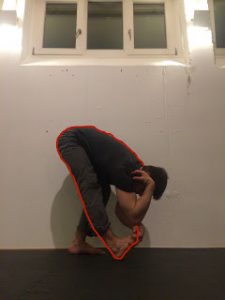
(globale Beweglichkeit in der rückwärtigen Kette)
(global mobility in the forward chain).
Most everyday / sports movements require global flexibility. Therefore, my tip: In addition to local stretches, also stretch entire “muscle loops”, as is done in yoga systems, for example. This also reaches fascial structures that connect different muscles and extend over long chains. Feel the difference with the following test: Get into the torso bend, leave your spine still quite upright, and feel the stretch. Now try to curl your spine and bring your forehead closer to your knees. Although the muscles of the back of the leg have not been “pulled apart” any further, you will most likely feel an intensified stretch.
Combinations:
Of course, many situations require not only one form of flexibility, but rather mixed forms. Common terms in training theory are active-static, active-dynamic, passive-static and passive-dynamic. I will discuss these combinations in part 3 of this series.
This first, yet very comprehensive section, has dealt with the basics of flexibility. The next part will build on this knowledge.
I will go into the benefits of flexibility training, explain the factors that influence flexibility as well as clear up “myths” surrounding this topic.
Be curious!
Your Nil
References:
https://www.ph-ludwigsburg.de/fileadmin/subsites/2d-sprt-t-01/user_files/Lehrbeauftragte/ws0809/Turbanski_-_Einfuehrung_in_die_Trainingslehre_BEWEGLICHKEIT.pdf
http://www.dr-moosburger.at/pub/pub046.pdf
http://www.dr-moosburger.at/pub/pub046.pdf
